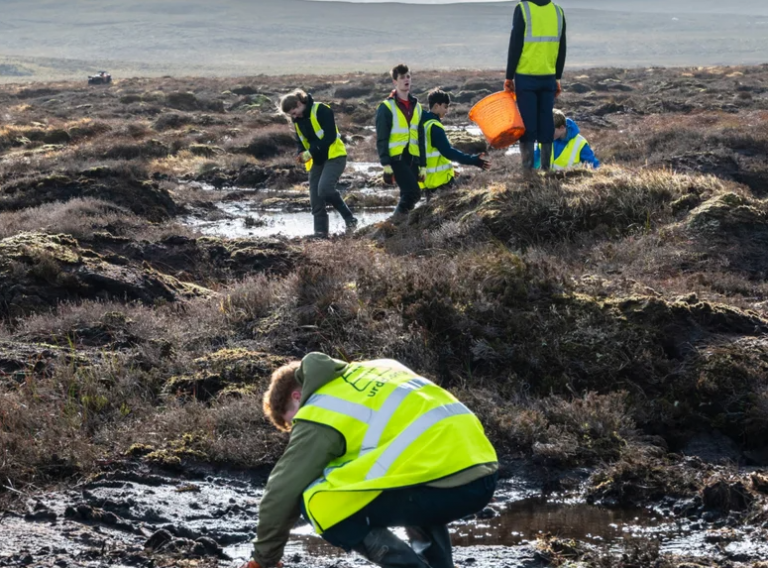The National Trust and Admiral have joined forces in a new strategic partnership that brings together nature conservation and community protection.
Over the next three years, the two organisations will work to restore vital landscapes and raise awareness of how nature-based solutions can help tackle the growing threat of flooding.
This is the first time both organisations have combined their strengths: Admiral’s experience in looking after people and the things that matter most to them, and the National Trust’s expertise in protecting the environment.
With flooding already affecting one in six homes in the UK, and that number expected to rise to one in four by 2050, the partnership will focus on natural flood management to slow water flow, store carbon, and create healthier habitats to make a real difference for people, wildlife, and the climate.
Funded by £600,000 investment from Admiral Group’s Green Fund Initiative, the project will deliver both large scale and targeted restoration work in Eryri (Snowdonia) in Wales, across the Holnicote Estate in Somerset and in the Lake District.
The first of these projects is now underway in Wales, where the National Trust team aims to restore the Migneint blanket bog – one of the country’s most precious and biodiverse upland habitats.
Working at the very peak of the vast Migneint plateau, this ambitious £180,000 project, will restore around 12 hectares, the size of three Principality stadiums, of the most severely eroded peatland at Waen Fraith over the next three years. The area is a rare and precious, protected landscape with the project aiming to deliver powerful benefits for biodiversity, climate resilience, and flood prevention—making it a win for both nature and communities.
Michelle Leavesley, Chief Sustainability Officer at Admiral Group, said: “We’re investing in natural flood management solutions to strengthen flood resilience for people and nature. For us at Admiral, protecting people’s homes means taking action beyond insurance by building understanding and resilience to the impact of changing climate and extreme weather events.”
Contractors have begun reshaping the land by reprofiling peat hags (isolated mounds of vegetated peat), building peat dams, and creating ponds to raise water levels. The aim of these interventions is to encourage the return of sphagnum moss, a water-loving plant that kickstarts the healing process and helps form new peat. As vegetation returns, surface roughness increases, further aiding water retention to help reduce flooding downstream.
To help boost this regrowth, volunteers, including young people from Gwersyll yr Urdd Glan-llyn, will join the effort, transplanting thousands of sphagnum moss plug plants sourced from elsewhere on the site, to help revegetate the site. Their hands-on involvement marks the beginning of a wider community movement to restore this vital ecosystem.
The project isn’t an isolated effort, building on years of restoration work across the Migneint through the Uwch Conwy project, and contributes to the long-term vision for the Special Area of Conservation (SAC). Together, these initiatives are piecing together a mosaic of healthy peatland, restoring the natural structure and resilience of the landscape for generations to come. Work will pause in the spring to protect ground-nesting birds, with monitoring continuing to assess progress. While the site may look raw at first, visible signs of recovery are expected by summer as vegetation takes hold, and the bog begins to heal.
Work at the other two sites is soon to get underway with a project to create new ponds, restore rivers and planting alongside river corridors about to start in Cumbria, and the creation of new wetlands at Holnicote in Somerset starting early next year.
For more news like this, click here.



